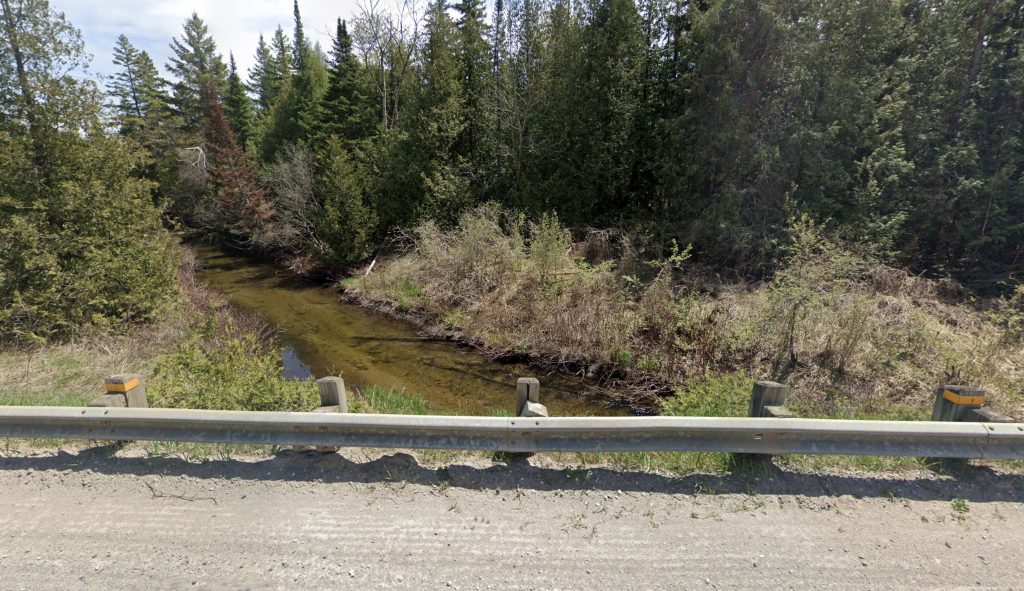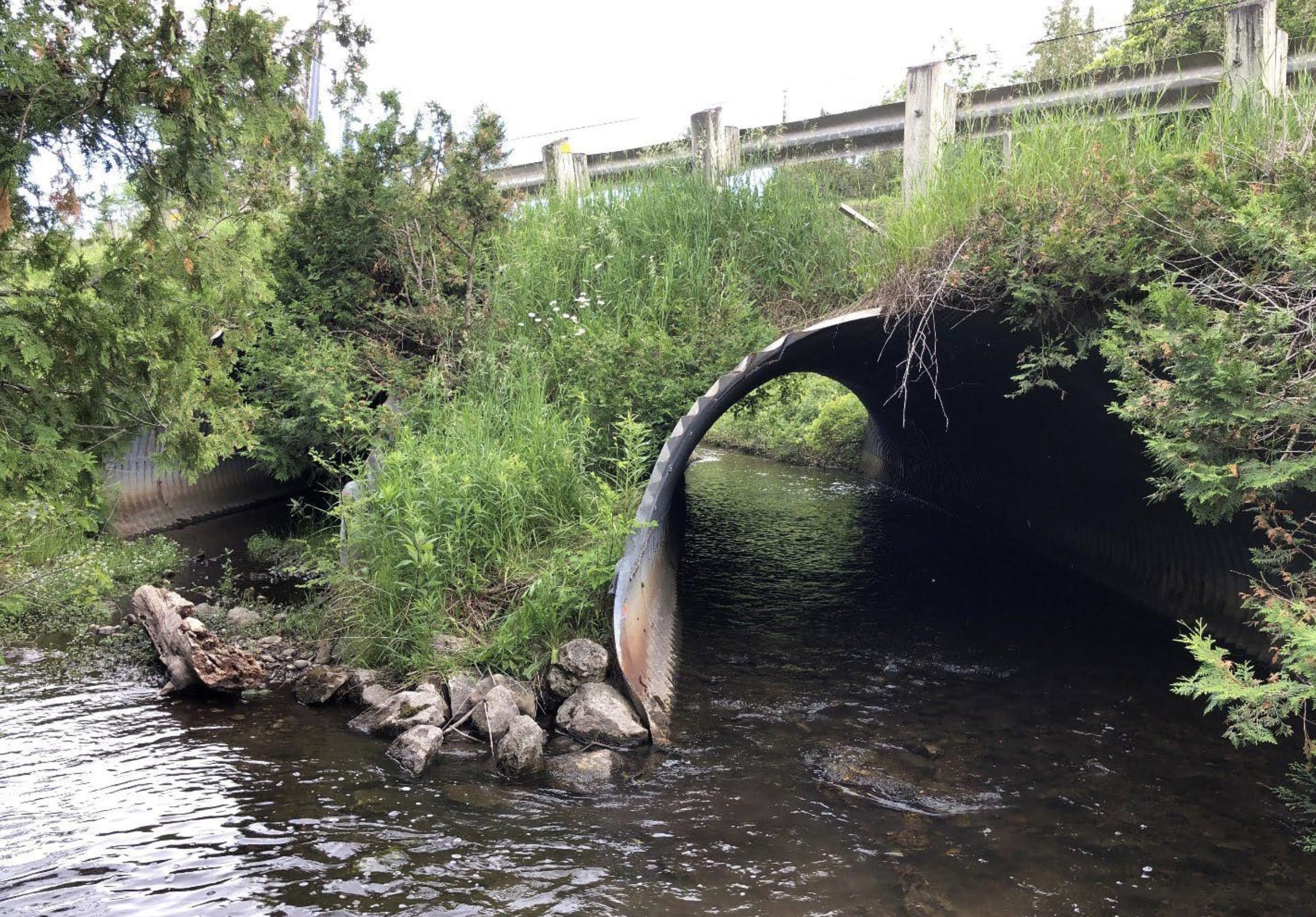ERIN – The replacement of “culvert 10” under Sideroad 17 in Erin was supposed to cost $835,000.
But five recent bids on the project received by the town ranged between $2.12 and $3.31 million.
At a council meeting last month, town infrastructure services director Nick Colucci blamed the significant variance on “inflationary costs and environmental considerations” that led to a redesign of the crossing since it was first approved in 2021.
Now a single-span bridge design is required, instead of the two sections of corrugated steel pipe currently running beneath Sideroad 17, stated a report to council.
Responding to May 19 questions from the Advertiser, town spokesperson Lavina Dixit wrote on June 6 that staff was aware as far back as 2021 that a bridge may be required.
Though the design for the culvert replacement began in 2021, Dixit explained the final design decision “is based on the timing of the environmental requirements and approvals.
“Environmental approvals took until this year to obtain,” Dixit added.
A flood analysis determined the current double-culvert caused a “backwater effect,” so the opening needs to be larger, the spokesperson wrote.
She added “environmental regulatory agencies” require an open-bottom bridge in consideration of the “sensitivity of the watercourse.”

A creek runs beneath Sideroad 17 in Erin. (Google Streetview)
Until approvals were sorted, the town couldn’t get an engineering estimate, according to Dixit, which would have provided council with a more accurate costing years ago.
Received this year, the engineering estimate by R.J. Burnside, hired as the town’s consultant, was pegged at $2 million for the new bridge.
Explaining why council wasn’t made aware of the variance until last month’s report, Colucci said the estimate wasn’t received until this spring, well after the December approval of this year’s budget.
In her email, Dixit noted it was council’s direction to complete the culvert replacement. The tender went out in March with the bidding window closing in April.
Burnside evaluated bids and recommended a pre-tax $2.12 million contract go to Bolton-based Esposito Bros Construction Ltd., which submitted the lowest bid.
The bid also includes $21,247 in provisional items, such as sod, retaining wall material and paving.
“It’s unlikely we’ll use all of those funds, but we’ll probably use a portion of each,” Colucci explained.
Once engineering fees are paid from the already-approved budget, the town would be left with a $1.5-million funding gap.
Staff recommended $150,000 come from the town’s development charge reserve fund, and $1.35 million come from the town’s Canada Community Building Fund (CCBF) reserve.
Councillor John Brennan expressed concern at the meeting about the town dipping into its reserves, and “the fact that these bids keep coming in over what we estimated in the budget.”
The town hasn’t tapped into the federal building dollars as much as it could, Colucci said, adding the government allotment this year was reduced because of that fact.
What the town could be doing, the infrastructure director suggested, is obtaining engineering estimates before budget time.
Without a proper estimate — R.J. Burnside’s was 1.3% under in this instance — costs are based on a consultant’s loose replacement estimate, provided when bridge assessments are completed every two years.
“When we starting doing detailed design, things come forward that could change that price,” Colucci told council.
The last assessment report was presented to council in 2021. In that report completed by R.J. Burnside, “culvert 10” was described as being in a poor and deteriorating condition.
“The plan is that in [the] future we’ll try to get those engineering estimates prior to doing the budget,” Colucci said. He added that with good information in-hand, a project could be budgeted for in the same year it’s to be completed.




